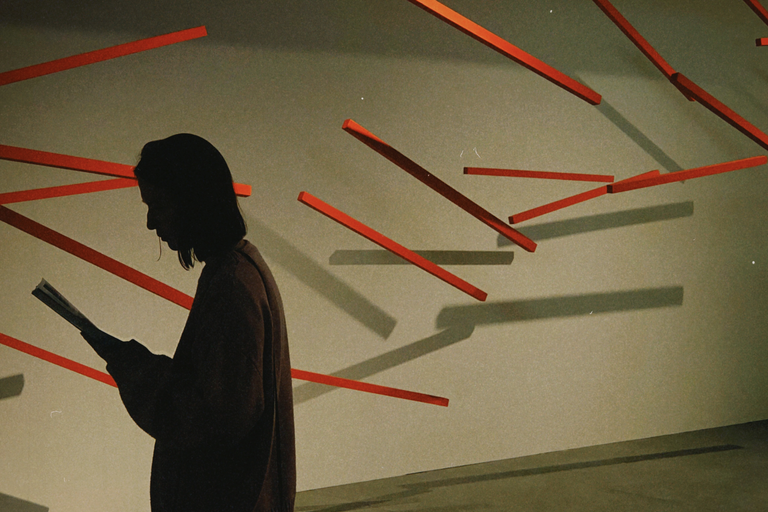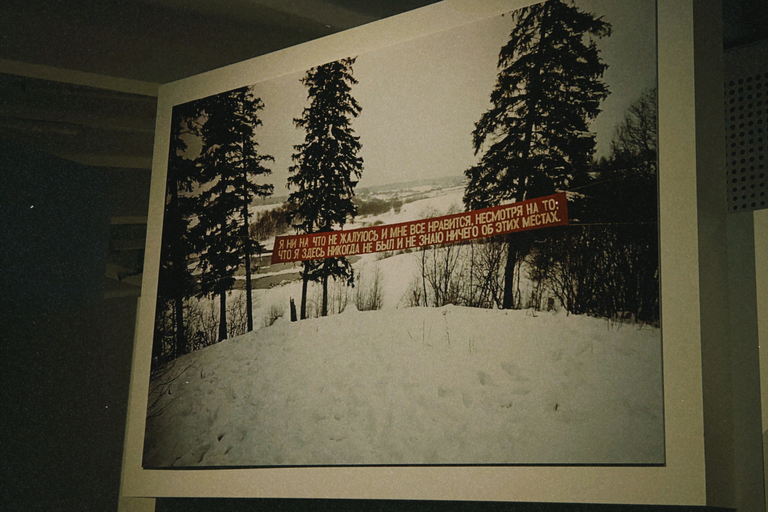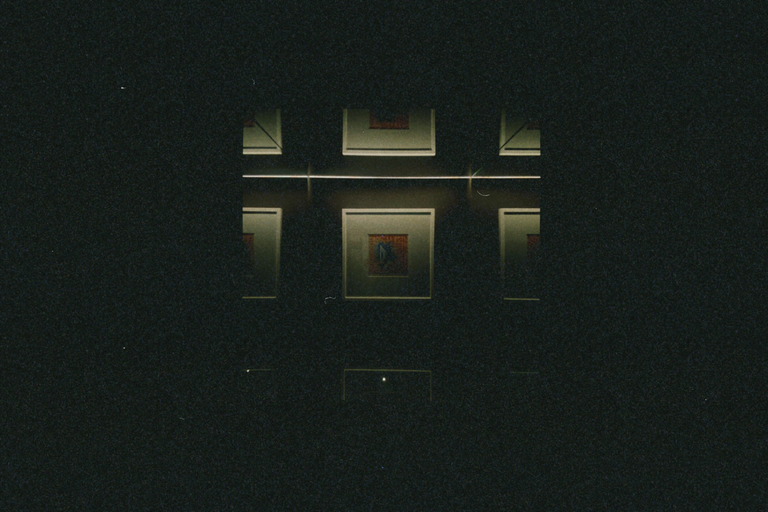As I am writing this, I don’t have any illusions that a lot of people will read till the very end, since this entry is going to be a very long one. But to those, who do — thank you in advance.

Today I went to see “The Russian Unbelievable” in the Zotov Centre — the cultural and research centre that introduces the audience to constructivism in arts and architecture. Upon going to see this particular exhibition, I had no expectations. Spoiler: it completely blew my mind by being very simple in a way, yet, for some reason — very emotional for me. It has been a long while since an art exhibition managed to bring out such feeling out of me, to the point where it almost brought me to tears towards the end (but we’ll get to that later).
I know, that Russia at the moment is a very touchy subject. Nevertheless, it’s home to me. A home, that is full of beautiful people and minds, culture and identity that are worth sharing. I hate politics as much as the next person, so I hope this post will show you a different side of the Russian people, the side that I love and miss and am proud of.
This will be more like an essay, so I hope you enjoy reading this one as much as I enjoyed writing it.
The Backstory of Constructivism



Before I share my thought on the exhibition itself, I feel like I need to give an explanation on what ‘constructivism’ even is. It’s an art movement that I feel like is very specific to Russia and most of the post-Soviet Region. It was founded in early 20th century by artists Vladimir Tatlin and Alexander Rodchenko. Constructivism is generally considered a Soviet phenomenon that emerged after the October Revolution as one of the directions of the new at the time, avant-garde, proletarian art. Of course, we can see many examples of constructivism in the world, but as a Russian poet Vladimir Mayakovsky said: “For the first time, not from France, but from Russia, a new word of art emerged - constructivism…”
In fine arts, but more specifically architecture, constructivism is characterised by strict lines, geometric shapes and monolithic appearance. The Constructivists rejected ‘excessive forms’ and an abundance of decorative elements. In their projects, the functions and purpose of the building were the main ones, not its appearance. Thus, only a functionally justified form can be truly beautiful. In 1920’s Constructivist tried to practically change the world. And now, 100 years later many modern architects around the world have accepted and frequently implement the philosophy that their constructivist forefathers have developed.
Fun fact: the Zotov Centre is a Constructivism heritage itself. During the Soviet times it used to be one of the first five bread factories in created Moscow. It was left abandoned until few years ago it was given a new life. Today the Bread Factory №5 (that was its original name) has the status of a cultural heritage site.
The Russian Unbelievable

At the very beginning of the exhibition you are met with a wall of text — the introduction of what you’re about to experience:
“Among the range of questions about what constructivism is and how to understand it, there is another one — where did constructivism come from. In this exhibition, looking ‘through a wide lens’ at the Russian cultural landscape, we explore (and investigate) why Constructivism was destined to be born in Russia”.
The exhibition explores the idea that through understanding constructivism as a cultural phenomenon one will be able to understand the Russian mentality. In this abstract I will try to highlight some of the parts that were more memorable to me personally.
The first part of the exhibition is called ‘Immensely’. According to the curators, t symbolises the immeasurable width of Russian landscapes — the horizontal infinity of the space, surrounded by wild nature elements and reflected in harsh climate and risky farming our ancestors had to deal with. The complexity of human survival and the ability to operate in risky conditions have formed the habit of relying on luck - the Russian «авось» (‘avos’) (if you know, you know, it's untranslatable).

This limitless space forms a model of the world that leads to abstract thinking and the hope that ‘everything will somehow work itself out’. This type of thinking has always been the downfall for many Russians, but also helped create many unimaginable wonders. Such duality is very characteristic of the ‘Russian soul’.
Moving on, we arrive at ‘In the midst’ section, where the idea of the main constructivism paradox is being explored.

The main paradox of the creative thinking in constructivism is the transition from the architect's unlimited free will to rigid planned schemes. And also the contrast between the complexity of conceptual thought and the simplicity of the forms it creates. Here we can trace the transition from thoughts about the absolute freedom of the individual to their absolute compliance to fate. These paradoxes coincide with the paradoxes of 20th century philosophical thought.
Later we see the ‘Recklessly’ section, that further dwells into the exploration of the Russian soul. The deepest features of the Russian worldview and character are the feeling of unpredictability of life and impossibility of its logical and rational comprehension. Passivity and fatalism are in constant conflict with the strong belief in luck, a tendency to ‘swim against the current’ and a tendency to jump between extremes. There’s a reason why in the Russian language we have these famous phrases: «Все или ничего» (’all or nothing’) or «Пан или пропал» (‘do or die’).



The aesthetics of the early avant-garde carry a powerful sense of anarchy, expressed in the desire for constant renewal through the overcoming of traditional canons. The relationship between the artist and the spectator was defined by the categories of freedom: freedom of creativity and freedom of choice. Later on that though.
Lastly, we move on to probably my favourite parts of the entire exhibition — ‘Unstoppably’ and ‘In Spite Of’. According to the curators of the exhibition, russussian artistic thought, which knows no measure, sometimes comes into conflict with common sense. In every action there is a search for a super meaning, a super idea, a super measure. This aspiration creates the idea of flight as a function not originally inherent in humans. And it is this aspiration that lies in the expression «Полет фантазии» (’flight of imagination’).



The epitome of idea of flight and the most important theme for the artists of Russian Constructivism and the avant-garde was the infinity of space. Dreams of the cosmos are associated with ideas about the unattainable ideal of free existence within the framework of society and morality.
And the first flights are always at risk of failure. As we have discovered earlier, in Russia everything that should be done is done by itself, not thanks to, but in spite of. The pioneers who take this risk ‘in spite of’ inspire us to go after our dreams, even if it is not safe. After all, there will definitely be those who will ‘appreciate, understand, and catch on’. And that thought will outlive everyone.
My Own Thoughts


On my way home and even while writing this I tried to structure my thoughts and emotions I was left with after experiencing this exhibition.
It was important to me to give such an in-depth explanation of the idea behind it, so you as well can get a glimpse of what I saw.
By the end of the exhibition I felt tears appearing in my eyes. Why? There may be many reasons. Possibly the main one is quite simple — I miss home. After almost a year being mostly away from home, the people I understand and easily connect with, the people that I have shared experiences with, especially in the resent years.
Being away from home hasn’t been as easy for me emotionally as I thought it would be. I constantly feel homesick, but I being away is the only possible and best solution for me right now. I am lucky to have a very understanding and supportive partner, who pushed me to come home before holidays and see my loved ones.

And I guess, now being here and seeing my own perception of the complexity of the Russian soul be showcased with all its positives and negatives was almost very comforting. ‘Finally, someone understands!’ The exhibition, although focused on fine arts and architecture, managed to expose the Russian soul in a way I haven’t seen it be done before. Very raw and sincere. Without trying to flatter it or insult it. That’s how I see it and how I wish others see it, too.
The constant conflict between paradoxes within each one of us, the contrast between a very pessimistic and passive outlook on life and at the same time — very strong will to create something out of nothing in a very faint hope, that things will be better one day.
I will be honest, with some of the exhibits I was genuinely surprised that they were allowed to be in the exhibition. But maybe we see what we want to see. I won't complain though, it is better this way. It means we still get to experience some art as it is. Let them be oblivious.
I’ll leave you with two images of quotes: one by a Russian poet Daniil Kharms and another by the artist Alexander Rodchenko. I hope this was an interesting read.


The rewards earned on this comment will go directly to the people( @x-rain ) sharing the post on Reddit as long as they are registered with @poshtoken. Sign up at https://hiveposh.com. Otherwise, rewards go to the author of the blog post.
You can check out this post and your own profile on the map. Be part of the Worldmappin Community and join our Discord Channel to get in touch with other travelers, ask questions or just be updated on our latest features.
Congratulations, your post has been added to the TravelFeed Map! 🎉🥳🌴
Did you know you have your own profile map?
And every post has their own map too!
Want to have your post on the map too?
- Go to TravelFeed Map
- Click the create pin button
- Drag the marker to where your post should be. Zoom in if needed or use the search bar (top right).
- Copy and paste the generated code in your post (any Hive frontend)
- Or login with Hive Keychain or Hivesigner and click "create post" to post to Hive directly from TravelFeed
- Congrats, your post is now on the map!
PS: You can import your previous Pinmapple posts to the TravelFeed map.Opt Out
Congratulations @maars! You received the biggest smile and some love from TravelFeed! Keep up the amazing blog. 😍 Your post was also chosen as top pick of the day and is now featured on the TravelFeed front page.
Thanks for using TravelFeed!
@for91days (TravelFeed team)
PS: Have you joined our Discord yet? This is where over 1000 members of the TravelFeed come together to chat. Join us!
Yes I see it today in modern housing architecture. It's minimalist and functional. Even among the wealthy beach holiday houses here on the South coast of Africa. Simple, open plan, spacious, full glass walls. No more frills.
Best wishes and solidarity with you from Africa.